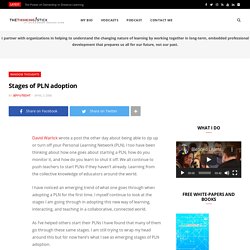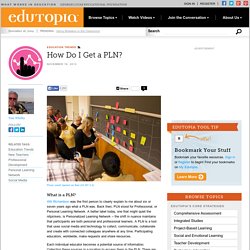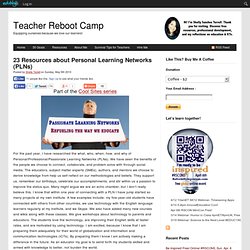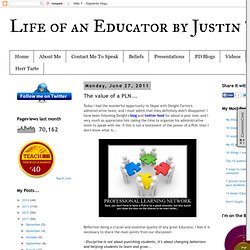

The Accidental Community: Feeling the Love. I recently read an article (posted on Facebook by a colleague of mine) about love in the workplace. The article spoke about how employees who felt companionate love at work performed better. It sparked my interest in teacher communities. PLCs and a Sense of Community Communities of teachers, professional learning communities (PLCs) in particular, have always interested me. I have worked in a few different schools and visited many more, and I've always wondered about the community of teachers in each of those schools. I am defining accidental communities as communities of teachers that work together in a collaborative and supportive fashion despite the structures officially set up by their school. These teachers I have seen are better off in their classrooms because of their supportive colleagues. What would happen if these communities were intentional? There are plenty of schools where PLCs are standard. The Potential in Team Building So how can we help build this love in our schools?
Stages of PLN adoption. David Warlick wrote a post the other day about being able to zip up or turn off your Personal Learning Network (PLN).

I too have been thinking about how one goes about starting a PLN, how do you monitor it, and how do you learn to shut it off. We all continue to push teachers to start PLNs if they haven’t already. Learning from the collective knowledge of educators around the world. I have noticed an emerging trend of what one goes through when adopting a PLN for the first time. Stages of PLN adoption. How Do I Get a PLN? What is a PLN?

Will Richardson was the first person to clearly explain to me about six or seven years ago what a PLN was. Back then, PLN stood for Professional, or Personal Learning Network. A better label today, one that might quiet the nitpickers, is Personalized Learning Network -- the shift in nuance maintains that participants are both personal and professional learners. 23 Resources about Personal Learning Networks (PLNs) Part of the Cool Sites series For the past year, I have researched the what, who, when, how, and why of Personal/Professional/Passionate Learning Networks (PLNs).

We have seen the benefits of the people we choose to connect, collaborate, and problem solve with through social media. The educators, subject matter experts (SMEs), authors, and mentors we choose to derive knowledge from help us self-reflect on our methodologies and beliefs. They support us, remember our birthdays, celebrate our accomplishments, and stir within us a passion to improve the status quo. Many might argue we are an echo chamber, but I don’t really believe this. Teachers owning their learning… Have you ever been presented with PD and then had no time to follow up?

How often do you have an uninterrupted chunk of time to inquire into something that interests you, to push your thinking and improve your practice? Do you have enough opportunities to explore and think collaboratively, to unpack and discuss big ideas with others of varied experience? On Monday we will have a half day of professional learning, different to any of our previous PD days. It’s based on a survey in which staff indicated their preferences for the structure and content of the day.
Here’s what it said on the Google doc which was shared with teachers: This table shows by far the most popular choices in our survey. I have no idea how the morning will go, but, here’s what I do know… A friend commented on the fact that I often write about innovations, before they happen. Like this: Like Loading... Professional Learning Communities. The value of a PLN. Today I had the wonderful opportunity to Skype with Dwight Carter's administrative team, and I must admit that they definitely didn't disappoint!

21st Century PLNs for School Leaders. Cc licensed ( BY ) flickr photo shared by krossbow I have to admit that I was pretty excited to write my first post for the Edutopia group that has a great list of educators sharing some of their best practices.

I wanted to share the piece in my own learning space, but you can see the original article posted on the Edutopia site. As many school administrators are enjoying their summer break, we all tend to think of ways that we can make our school better in the upcoming year. Often, I point school principals and district leaders to a powerful post by Will Richardson that helps us point the finger right at ourselves when we are looking to push our school ahead. Richardson states: “Meaningful change ain’t gonna happen for our kids if we’re not willing to invest in it for ourselves first. With that being said, I have spent the last few years focusing a great deal on my work as an instructional leader within my role as school-based principal, and now as division principal. 2) Read Blogs.
8 Ideas, 10 Guides, And 17 Tools For A Better Professional Learning Network. Personal learning networks are a great way for educators to get connected with learning opportunities, access professional development resources, and to build camaraderie with other education professionals.

Although PLNs have been around for years, in recent years social media has made it possible for these networks to grow exponentially. Now, it’s possible to expand and connect your network around the world anytime, anywhere. But how exactly do you go about doing that? Check out our guide to growing your personal learning network with social media, full of more than 30 different tips, ideas, useful resources, and social media tools that can make it all possible.
Tips & Ideas. The 4 Best Ways To Personalize Your Professional Development. Why (And How) You Should Create A Personal Learning Network.